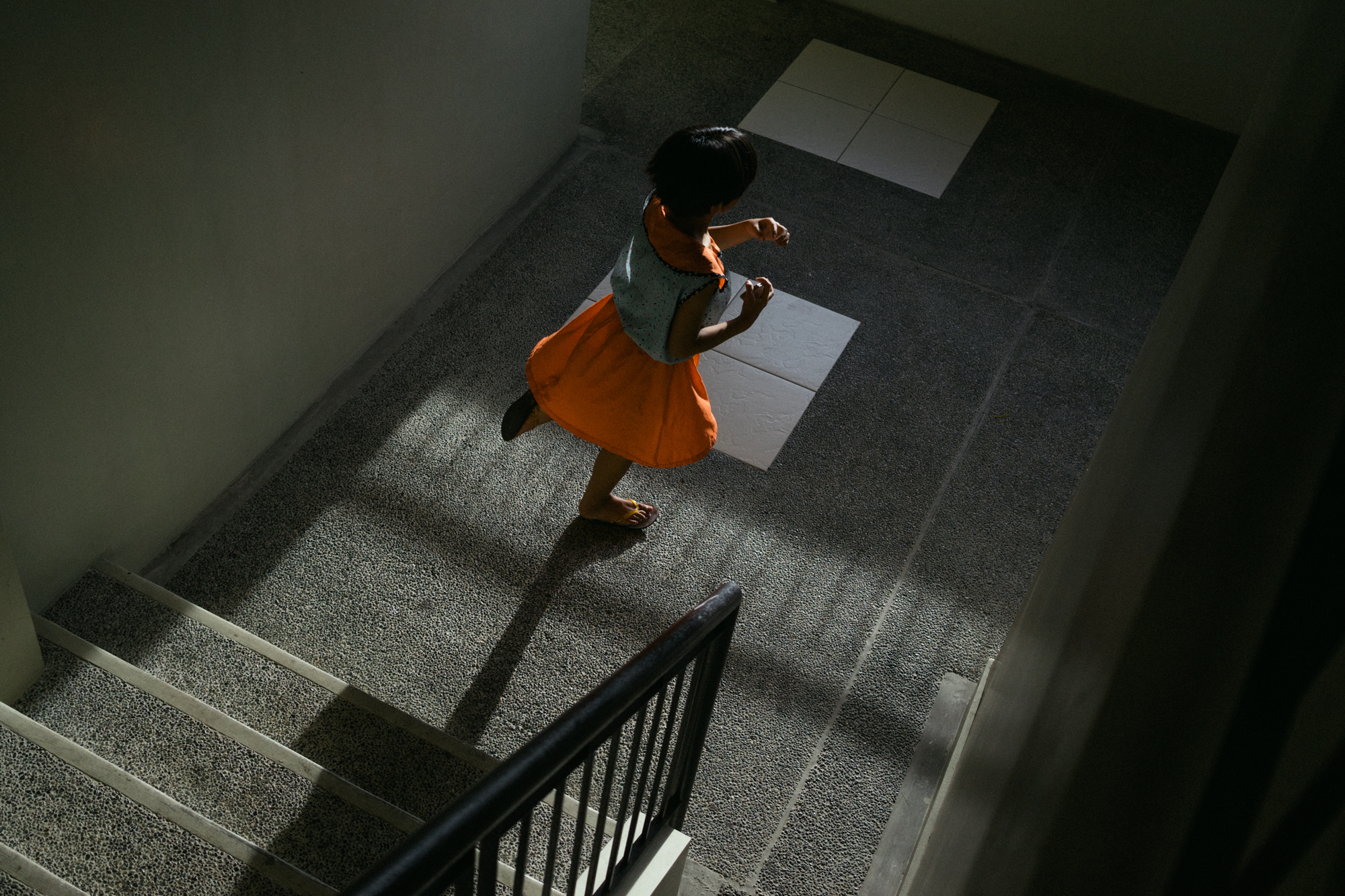SHELTER FROM THE STORM
In the Philippines,women and girls enter sex trade amidst displacement from typhoons
When Gemma first started working in the red light district of Angeles City, Philippines, she was given a knife and pepper spray by her sisters. The eldest, Jojo, asked that she always text the name and room number of the motel where a man would take her.
The sisters wept.
Angeles City, dubbed the “Supermarket of Sex,” thrives with foreigners, and Filipina women making money in its bars. Its streets are filled with neon lights, high heels, lingerie and loud music. The sisters never planned to come here. They were honors students in high school, and their mother described them as having been “godly children.”
Jojo left Angeles City at 23 to go back and tend her rice field in Leyte. She had just given birth and was going to take care of the baby there, even though there were whispers from the neighbors about what she did for work. Within a day of moving back to Leyte, typhoon Haiyan came. Jojo and her family had to evacuate to a center. After a month, Jojo left her baby to work in a bar.
“We won't survive if we don't have each other,” Gemma says. “We don't leave each other behind.”
Jojo and Gemma are among the Filipino women that are in the Philippines' sex trade, amidst displacement from typhoons, coupled with a lack of decent livelihood in their provinces. The Philippines consistently makes the lists of countries most affected by climate change, with its frequent storms. Among the most vulnerable regions is Eastern Visayas, where Jojo and Gemma are from. It's a place reliant on agriculture, and one of the poorest regions in the Philippines. It was Ground Zero for typhoon Haiyan. A report from ADB links natural disasters with extreme poverty, and states, 'This reliance [on agriculture] is most striking in Eastern Visayas where almost half of household incomes of the poorest 40% households are derived from earnings from agriculture highlighting their vulnerability to poverty from natural calamities.'
Typhoon Haiyan hit the Philippines in 2013, displacing an estimate of 4 million people. It is one of the strongest tropical cyclones ever recorded. After Typhoon Haiyan the United Nations Population Fund estimated that 5,000 women were subjected to sexual violence just in the month after the storm. Darlene Pajarito, the head of the Philippines Anti Trafficking unit, describes the wake of typhoon Haiyan as a 'feast for human traffickers.' The U.S. State Department’s Trafficking Trafficking In Persons Report stated that internally displaced people, particularly from typhoon-stricken communities, “are subjected to domestic servitude, forced begging, forced labor in small factories, and sex trafficking in Manila, Cebu, Angeles, and urbanized cities in Mindanao.”
Numerous stories of victims surfaced after the storm. A young girl, who was then a pregnant 16-year-old, says she was promised a job – advertised as a “work from home” opportunity -- that turned out to be a cyber sex den. In a shelter for underage victims of human trafficking and sexual violence, we met a girl who narrates that at age 12 she was pimped out by her stepmother to foreigners in a shack not far from a storm evacuation center. In this shelter, North of Manila, we met many survivors. Their rooms are adorned with various things-- teddy bears, a cutout of the teen star Daniel Padilla, tiny pieces of paper folded to form a swan. A painting in the hallway reads, 'Welcome to our home.'
But for many, leaving the sex trade is not an option. In Angeles City, the Philippines' primary red light district thrives with foreigners, and Filipina women making money in its bars. They can make money from various acts, from earning commission when a customer buys them drinks, engaging in sexual activities after a customer pays the 'bar fine' to take them out of their shift, or selling their virginity as a 'cherry girl.'
'In this town, most of the women are from Samar and Leyte,' a sex worker tells us. Around the Philippines, these women are perceived by society as 'gold diggers.' But what echoes in the stories are that they are not gold diggers - they are breadwinners.
Jojo, Gemma, and Joanne have the responsibility to feed their family and maintain their home. They are working so their mom can seek treatment for her breast cancer. 'We have no plans to go back there,' Jojo says. 'Here there's at least some way to make a living. And here, there's tequila.'
When Haiyan came, the roof of their house got blown off, the walls completely destroyed. The store their mother ran was looted, and almost nothing was left. Jojo describes nights on the streets of Angeles City as affording small steps in rebuilding a home - going home with a foreigner can get her enough money for hollow blocks, then maybe next time a bit of plywood, the roof. Their house is by a lush green field and the mountains, and Jojo who worked nights to help get it rebuilt. The walls inside are blue, with photographs of the girls, still water damaged from typhoons.
Back in Leyte, their mother lives in that house. It withstood the last rainfall.
Project made possible by a grant from The GroundTruth Project.
Listen to the audio story, by Aurora Almendral.
More links:
http://wapo.st/2pG1XHo#1a2e59d27a
https://witness.worldpressphoto.org/shelter-from-the-storm-29e491020e41
https://thelily.com/displaced-typhoon-victims-forced-into-the-sex-trade-175ef926f638
https://www.internazionale.it/foto/2017/07/06/luci-rosse-dopo-il-tifone
https://www.mapsimages.com/works/shelter-from-the-storm/

















